Overview of the Scholarship and Objectives
The John Dunsmore Travel Scholarship that was set up by Susie Dunsmore was an amazing experience which I had the great opportunity to receive during my time at the Royal College of Art and went a few months after graduation. Staying there for 7 weeks has given me a good insight to the Nepalese way of living and went with another recipient and classmate, Rebecca Lucraft. The scholarship enabled me to travel to a remote area of north-east Nepal, in the Sankhuwasabha District, to work with a group Nepalese women who use nettle fibre to make textile crafts and products. The brief of the John Dunsmore Travel Scholarship was to come up with a product using the nettle fiber that was grown locally a few hours away, making it into either for a local, tourist of export product.
Journey to the Weaving Centre
After 4 days in Kathmandu, Rebecca and I took a little plane from Kathmandu to Tumlingtar airport (1 hour), a jeep to Kambari (2 hours), stayed over night and started walking, stopping over to rest for the night and finally reached Bala the next afternoon, after 2 days of trekking. (Which might not seem long but it felt ages!). We arrived at this lovely little house John and Susie set up together nicknamed, "The Weaving Centre". We took a bath in the river and had the rest of the day to settle in.
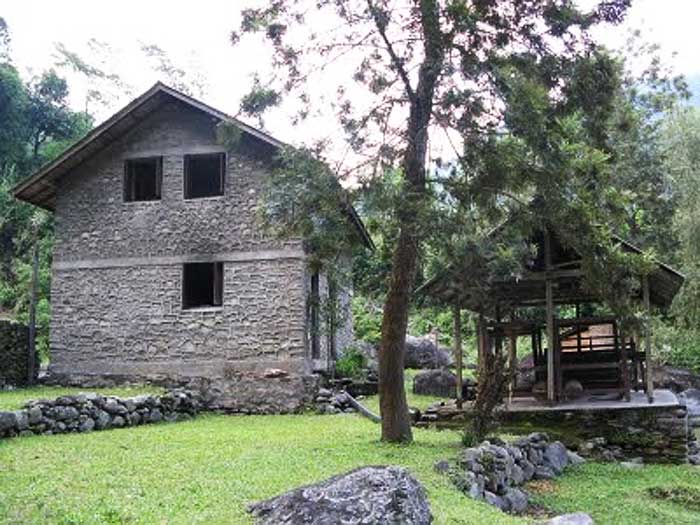
Initial Research and Design Inspiration
I had already looked around the craft shops in Kathmandu. Craft shops like Ama Craft, Folk Nepal, etc. The women in Bala had made lots of different nettle products over the years. Belts, hats, bags, table mats, cloth for garment products, sandals, etc. but the product which the majority of women seemed to like to make most were shawls. I found out the reason being these shawls were knitted and it was easy for them knit while walking, or when they had a few minutes to spare between their many chores and responsibilities. Although the weaving centre was well equipped with looms, weaving was less popular due their portablity.
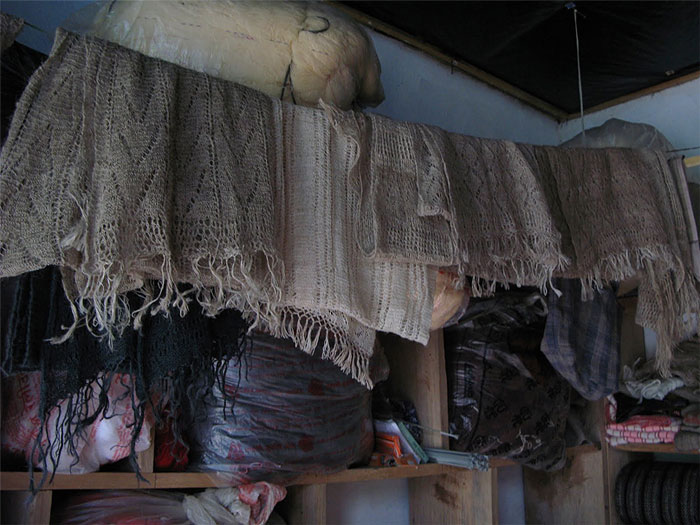
Collaborating with Local Artisans
The next day we met the group of women we were to work with. We started with a little drawing session to get into the swing of things. We wanted to work with them to create a product but they were not too keen on drawing and wanted to know what to make so we adapted our plan and tried a few technical exercises.
Although I had prepared myself for a fair amount of knitters, I was overwhelmed by the number of women who opted for the "knitting group" when we split into 2 groups, where I lead one and Rebecca lead the other.
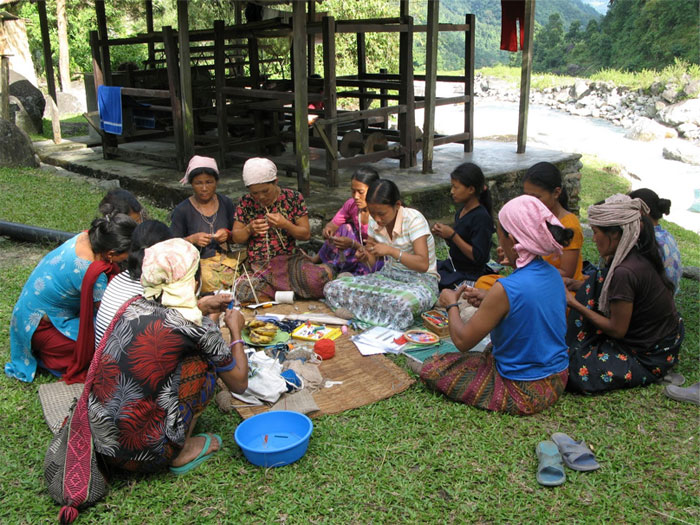
The next day, it was time for me to come up with a product. I had a few things to consider:
- A product suitable for the market (local or export)
- A product using the skills the women had
- A product that could be complete in the next 3 days
Developing a Product with Practical and Market Appeal
Since knitting was what the women preferred, the product would have to be knitted. With the little amount of time we had together, I knew I couldn't teach them anything too complicated and had to base the design of the product on the knitting skills they already had. They already had great skill of knitting lace designs they copied and remember extremely well from books, and can be seen in the piles of shawls around the weaving centre. These were done in the fine nettle yarn that they hand spun and I was very impressed they hand knitted with such fine yarn and very quickly too.
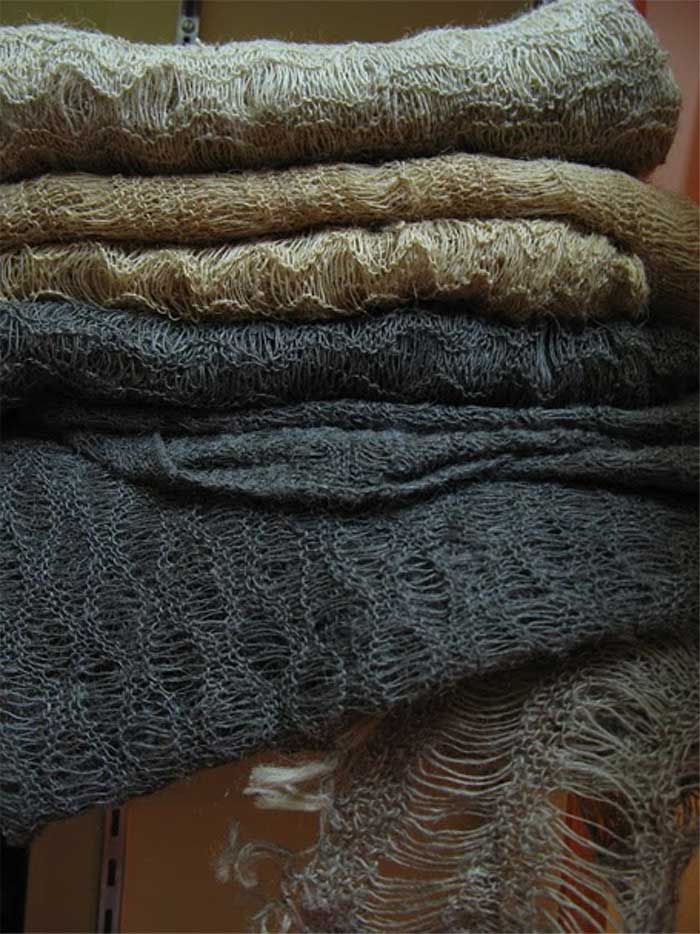
Almost all the women carried a colourful woven bag and that gave me the idea to make knitted bags as the product using their traditional bags as the inspiration.
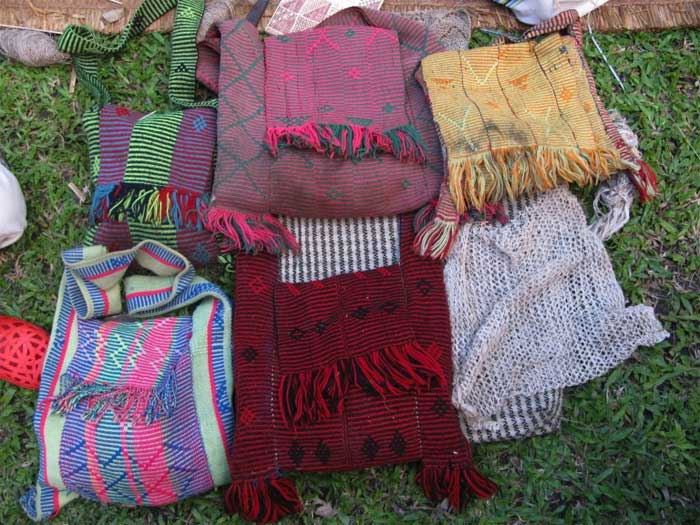
Overcoming Practical Challenges
Although nettle fibre has a lovely natural colour, I though it would be interesting to add a bit of colour. Dyeing was too lengthy a process so I tried putting coloured fabrics behind the lace knits which worked well as it kept the natural colour of the nettle yarn and enhanced the delicate lace patterns.
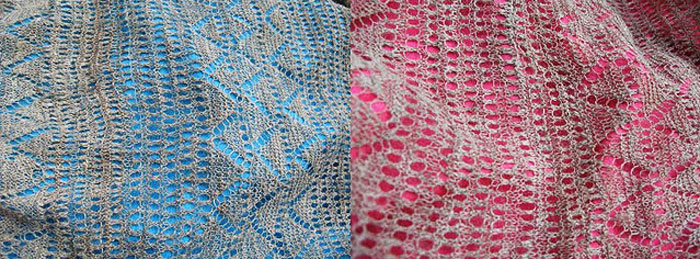
I really loved the woven bamboo straps on the sturdy woven baskets the Nepalese use to transport items and asked if any of the women could make one using nettle yarn. It was the craft of men and but thankfully one woman in the group knew that plaiting method.
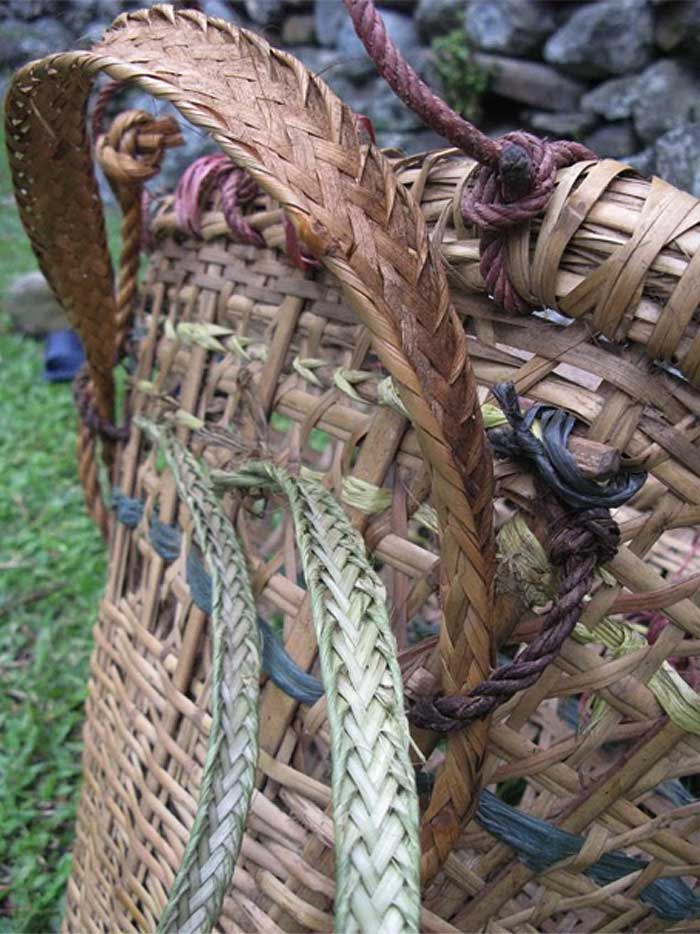
She showed us how using a few strands of nettle yarn. It was rather complicated but a few of us had a go, anchoring one end between our toes.
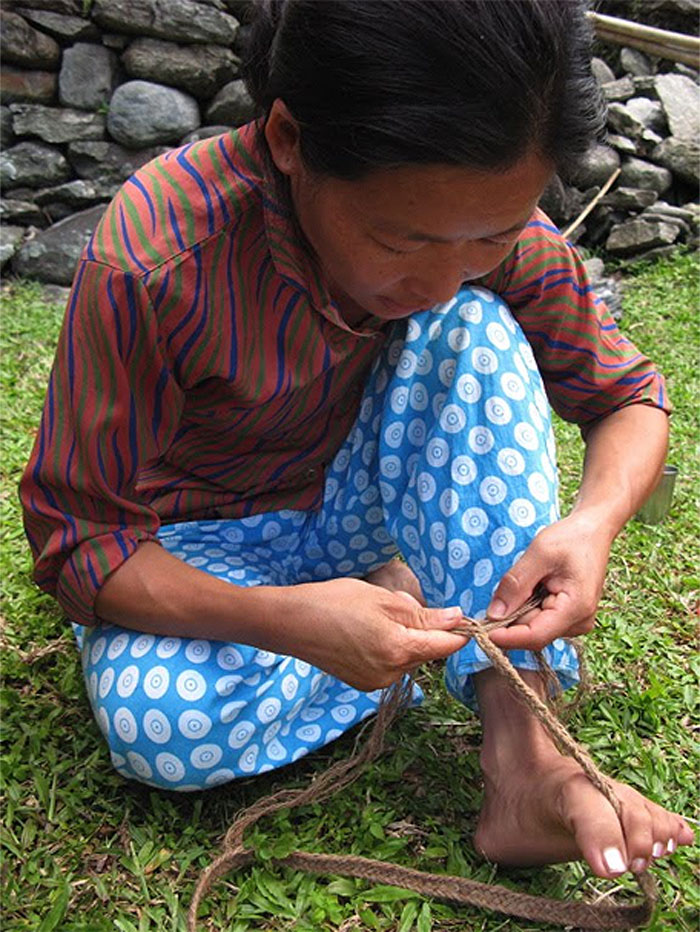
I put together a sample bag by cutting up a damaged shawl (some areas were chewed up rats), putting a piece of fabric in as lining, and using plaiting technique for the strap.
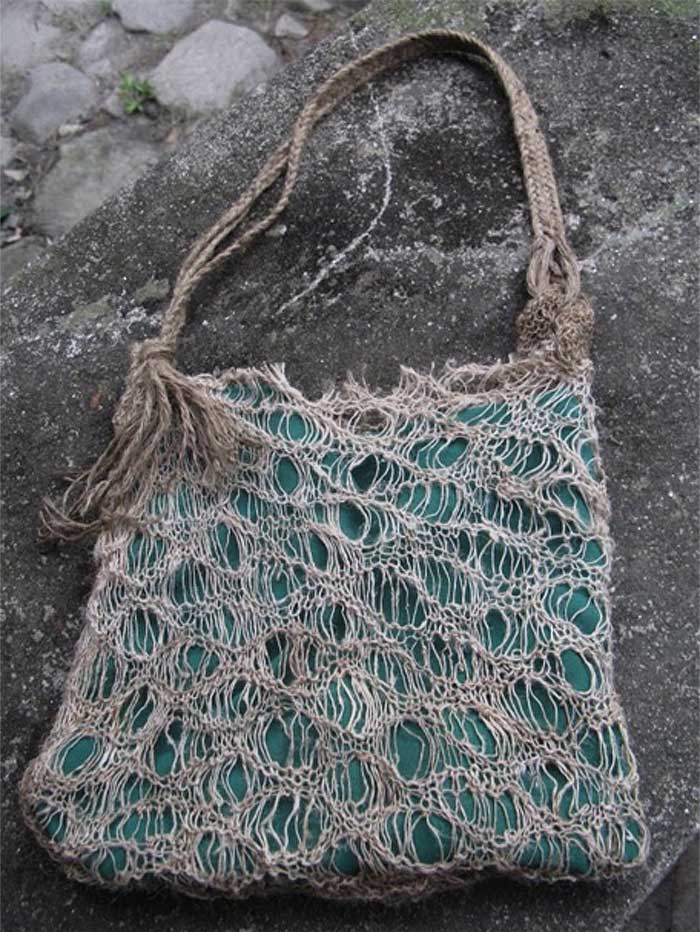
I thought to knit the bag in a circular knit would save time sewing up the sides so I showed the women the magic cast-on method. We didn't have any proper double pointed knitting needles so we improvised and used a pack of wooden barbeque sticks. One end was already pointed so we just had to sharpen the other end using a knife.

Final Product and Impact
The first bag was finished! It was quite small and there's no lining but it looked very promising. We had discussed making these first ones small so there was more chance of finishing before I left, and could be made larger or adapted in any other way later.
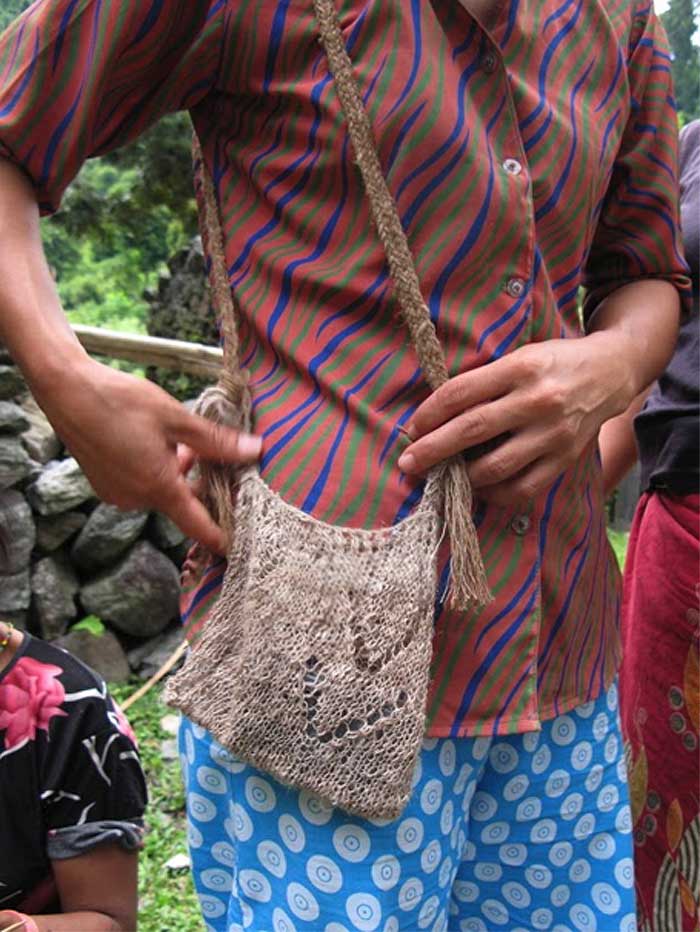
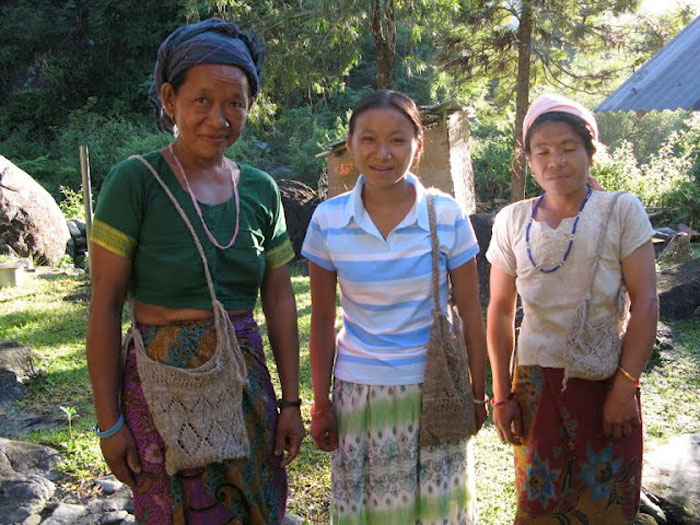
Reflecting on the Experience
The project culminated in an experience that was both personally fulfilling and professionally enriching. The collaboration highlighted the potential of blending traditional craftsmanship with contemporary design, creating a product that is both culturally authentic and marketable. The scholarship offered invaluable insights into Nepalese culture and craftsmanship, allowing me to contribute to preserving and elevating indigenous skills in a way that was respectful, collaborative, and forward-thinking.

